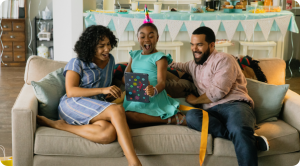Parents of young children are in a unique position during our time of social distancing. While you want your children to have a good balance of schoolwork, outdoor exercise, chores, and downtime each day, some of you might also be trying to work from home, too. And it’s tough to manage it all. This is often where technology comes in as a sort of electronic babysitter. Don’t feel guilty: we all do it from time to time. But how do you use technology in these tough times while also ensuring that you aren’t giving your kids too much screen time?
It isn’t just about too much screen time but also using screen time for the right kinds of apps. While the kids can play mindless games or watch cartoons or TV shows and movies all day, this isn’t exactly going to foster learning and social engagement. Many school boards will be providing access to cloud-based educational software like StudyLadder and Edsby, along with delivering remote teaching from schools using video messaging platforms like Zoom, if that hasn’t already begun by the time you read this. But what about apps kids can use on their mobile devices to further learning and foster “stay at home” entertainment?
Here are a few apps that, if used properly, can be a lifesaver for these next few months (or longer) while the kids are home from school.
Messenger for Kids

Photo courtesy of Messenger for Kids
I avoided downloading this app for my son, believing there was no viable reason an 8-year-old would need to send text messages or make video calls. But getting out to see our closest family and friends like we would often do before the COVID-19 coronavirus pandemic isn’t a possibility now. This app is fantastic for giving kids a way to still interact with friends. Parents set it up using their existing Facebook accounts and approve contacts, who must be associated with a parent account. Once added, kids can make group or one-to-one video calls. To add a new contact, they must first receive approval from their parent. They can video chat, send text-based messages, and even talk while playing games.
My son has been using the app twice a day for about half an hour each time to connect with friends and family, including his grandparents. Sometimes he plays games with friends and that’s OK because they’re also communicating and working together while they do it. It’s no substitute for in-person play but it’s all they have right now. Free; iOS, Android, Amazon
Houseparty
Houseparty is a great app to use if you want to connect with a large group of friends or family and play fun party games even if you can’t physically be in the same room. Unlike apps like WhatsApp that only let you video chat with up to four people at once, you can connect up to eight people using this app.
It’s ideal for older kids, including teens and tweens. Once everyone is online, you can play the built-in games together like Heads Up, where players try to get one person to guess a word that appears on everyone’s screen but theirs, as well as trivia, and chips and guac, essentially a clean version of Cards Against Humanity. I tried chatting and playing all of the games with two girlfriends and we had tons of fun. Aside from a slight echo, the call was flawless. We’ll be trying it again with a larger group to see how it works. Free; iOS, Android, macOS, Chrome
Check out some other video and messaging app options to consider.
Scholastic
You don’t want kids to spend all their app time on entertainment. Education is important, too. There are a number of free online resources you can use to supplement the work provided by the school, compensating for the lack of in-class lecture time. Scholastic, for example, offers a wide selection of mobile apps for both Android and iOS devices. They range from interactive storybooks that are ideal for toddlers and kindergarteners to word hunt games designed to help young kids boost their vocabulary. In addition to the apps, you can also access various free learn-at-home activities for K-12 kids via the website.
Rosetta Stone
The language learning service is offering free language lessons for students during this period of social distancing, and I highly recommend trying it. My son and I have added daily Spanish lessons to the at-home curriculum now that we have the time. While we use a laptop and website, you can also access your account from a mobile device using the app, including iOS, Apple Watch, Android, and Samsung devices.
Kids are shown photos with phrases they can also hear to introduce different words, and they have to match them together. They move on to vocabulary and grammar, using the device’s mic to repeat the words until they get them right. The lessons can be paused at any time so the kids can do one or two lessons per day, pause, and pick up where they left off the next day. It’s a great activity they can do quietly on their own with headphones any time you hear “I’m bored.”
Alternatively, it’s also a great activity the family can do together so you can all learn a new language to use on your next family vacation once it’s safe to travel again.
# # #
WhatsYourTech.ca has more COVID-19 related technology articles you can read; please visit our new dedicated articles listing page.



